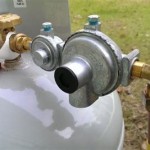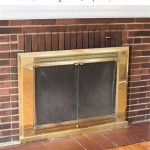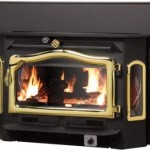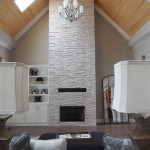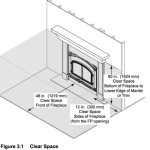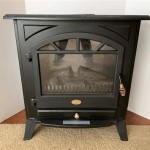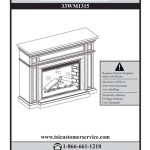Wood Stove Insert for Prefab Fireplace: Enhancing Efficiency and Aesthetics
Prefabricated fireplaces, also known as factory-built fireplaces, are common features in many homes due to their ease of installation and relatively lower initial cost compared to traditional masonry fireplaces. However, their efficiency in heating a home can be significantly less than desired. A wood stove insert offers a practical solution to enhance the heating capability of a prefab fireplace while maintaining its aesthetic appeal and improving overall safety.
A wood stove insert is essentially a self-contained wood-burning stove designed to fit inside the firebox of an existing fireplace. Unlike open fireplaces, which lose a significant amount of heat up the chimney, wood stove inserts are designed to burn wood more efficiently and radiate heat into the room. This is achieved through a sealed combustion chamber, controlled airflow, and often, a built-in fan to distribute heat effectively. Selecting the right wood stove insert for a prefab fireplace requires careful consideration of several factors, including the size and construction of the fireplace, the heating needs of the space, and local building codes and regulations.
It is critical to emphasize that not all wood stove inserts are compatible with all prefab fireplaces. Compatibility depends on several factors, primarily the listing of the prefab fireplace itself. The manufacturer’s documentation for the prefab fireplace will specify whether it is approved for use with a wood-burning insert and, if so, which specific models or types of inserts are permitted. Installing an unapproved insert can create a significant fire hazard and may void the fireplace's warranty, and can even violate local codes.
Understanding the Compatibility of Wood Stove Inserts with Prefab Fireplaces
The primary consideration when selecting a wood stove insert for a prefab fireplace is ensuring compatibility. This isn't a matter of simply choosing an insert that physically fits into the firebox. Instead, it hinges on whether the prefab fireplace is listed or approved for such use. This information is typically found in the fireplace's installation manual or through the manufacturer's website.
The listing, which is generally provided by a recognized testing laboratory such as UL (Underwriters Laboratories) or Warnock Hersey, indicates that the fireplace has been tested and certified to meet certain safety standards. This listing may explicitly state whether the fireplace can be used with a wood-burning insert and, if so, specify any limitations or requirements. These requirements might include the need for a specific type of chimney liner, a maximum insert size, or restrictions on the insert's BTU output.
If the prefab fireplace is not listed for use with a wood-burning insert, installing one is strongly discouraged. The fireplace's construction may not be designed to withstand the higher temperatures and more intense heat generated by an insert. This can lead to overheating, damage to the fireplace structure, and potentially, a house fire. Furthermore, installing an unapproved insert can invalidate your homeowner's insurance policy in the event of a fire.
In some cases, a prefab fireplace might be listed for use with a specific model or brand of wood stove insert. This often involves a close collaboration between the fireplace manufacturer and the insert manufacturer to ensure a safe and compatible installation. In these situations, it is essential to adhere strictly to the manufacturer's instructions and use only the specified insert model.
When researching compatibility, it's also vital to understand the concept of a "zero-clearance" fireplace. Many prefab fireplaces are designed to be installed with minimal clearance from combustible materials, such as wood framing. However, installing a wood stove insert can change the heat output and potentially compromise the zero-clearance design. The manufacturer's instructions will specify whether the original zero-clearance rating is maintained with an approved insert or if additional clearances are required.
Assessing the Size and Heating Needs
Once compatibility is established, the next crucial step is to determine the appropriate size and heating capacity of the wood stove insert. This involves considering the dimensions of the prefab fireplace firebox, the size of the area you want to heat, and the climate in your region.
The dimensions of the firebox will dictate the maximum size of the insert that can be physically accommodated. It's essential to measure the firebox accurately, paying attention to the width, height, and depth. The insert should fit comfortably within the firebox without being too tight or requiring modifications to the fireplace structure. Leaving some space around the insert can also aid in airflow and heat distribution. Remember to also take into account the size of the fireplace opening, as that will dictate the size of the insert's faceplate.
The heating capacity of a wood stove insert is typically measured in British Thermal Units (BTUs). The appropriate BTU output will depend on the size of the area you want to heat, the insulation levels in your home, and the climate in your region. A larger space or a colder climate will require a higher BTU output. It is recommended to perform a heat loss calculation for your home to accurately determine the required BTU output.
Over-sizing an insert can lead to discomfort and inefficiency, as the stove may produce too much heat for the space, resulting in overheating and wasted fuel. Under-sizing, on the other hand, may not provide sufficient heat to adequately warm the area. It is important to choose an insert that is appropriately sized for your specific heating needs.
Consider the burn time of the insert. Different models offer varying burn times, which refers to how long the insert can produce heat on a single load of wood. Longer burn times can be more convenient, as they require less frequent refueling. However, longer burn times often come at the expense of higher BTU output, so it's essential to balance convenience with heating performance.
Installation and Safety Considerations
Proper installation of a wood stove insert into a prefab fireplace is paramount for ensuring safety and optimal performance. The installation process typically involves several steps, including preparing the fireplace, installing a chimney liner, connecting the insert to the liner, and securing the insert within the firebox.
Before installing an insert, the fireplace should be thoroughly cleaned and inspected for any damage. Any existing dampers or other internal components that could obstruct airflow should be removed. It is essential to ensure that the fireplace structure is sound and capable of withstanding the additional weight and heat of the insert.
A chimney liner is a crucial component of the installation process. It is designed to protect the existing chimney from the corrosive byproducts of wood combustion and to ensure proper draft. Typically, a stainless steel liner is used for wood stove insert installations. The liner should be sized appropriately for the insert and installed according to the manufacturer's instructions. It is critical to note that simply venting the insert into the existing prefab fireplace chimney is almost never allowed and is extremely dangerous.
Connecting the insert to the chimney liner involves carefully routing the liner through the chimney and connecting it to the insert's flue collar. The connection should be airtight to prevent flue gases from leaking into the home. It is vital to follow the manufacturer's instructions and use appropriate sealing materials to ensure a secure connection.
Securing the insert within the firebox typically involves using adjustable legs or shims to level the insert and ensure it sits securely. The insert should be positioned so that it is properly aligned with the fireplace opening and that there is adequate clearance around the insert for airflow. A surround, often called a faceplate, is usually installed to cover the gap between the insert and the fireplace opening, providing a finished and aesthetically pleasing look.
After the installation is complete, it is important to have the insert inspected by a qualified professional to ensure that it has been installed correctly and that it meets all safety requirements. Regular maintenance, such as cleaning the chimney and inspecting the insert for wear and tear, is essential for maintaining safe and efficient operation.
It is important to follow local building codes and regulations when installing a wood stove insert. Many jurisdictions require permits for such installations and may have specific requirements for chimney liners, clearances, and other safety aspects. Failure to comply with local codes can result in fines or other penalties.
Operating a wood stove insert safely requires careful attention to detail and adherence to best practices. It is important to use only seasoned, dry wood, as wet or unseasoned wood produces more smoke and creosote, which can increase the risk of chimney fires. Regularly inspect the chimney for creosote buildup and have it cleaned as needed.
Install carbon monoxide detectors and smoke detectors in your home and test them regularly. These devices can provide early warning of dangerous conditions and help to prevent accidents. Never leave a wood stove insert unattended while it is burning, and keep combustible materials away from the stove.
By understanding the compatibility requirements, assessing your heating needs, and following proper installation and safety procedures, you can successfully install a wood stove insert in your prefab fireplace and enjoy the benefits of efficient and reliable heating.

Installing Inserts Into Prefab Fireplaces Arlington Tx Black Velvet

New Wood Burning Prefab Fireplaces Complete Fireplace Installs

New Wood Burning Prefab Fireplaces Complete Fireplace Installs

Time To Replace Wood Burning Prefab Fireplace Greenville Sc Blue Sky

Zero Clearance Vs Prefabricated Fireplace Full Service Chimney

All About Prefabricated Fireplaces Chimney Savers

Superior Prefab Wrt Wct 3000 Pro Series Indoor Fireplace Bollens Antique Hearth Llc

Superior Fireplaces 50 Inch Winston Luxury Series Wood Burning Fireplace Fine S Gas

Fireplace Inserts Stove Installation Nw Suburbs Of Chicago Il Aelite

Fireplace Installation Full Service Chimney Serving Kansas City Area
Related Posts

